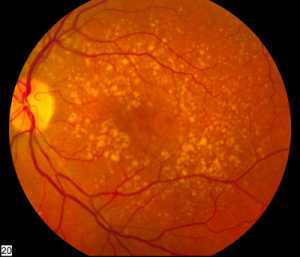Study Finds Promising Effects of Jarlsberg® Cheese on Bone and Metabolic Markers
MedicalResearch.com Interview with: Stig Larsen PhD Professor Emeritus Controlled Clinical Research Methodology and Statistics Norwegian University of Life Sciences Oslo, Norway
MedicalResearch.com:? What are the main findings?
Response: Osteoporosis is a major problem among elderly and malnourished people. Calcium, Vitamin D and Vitamin K are beneficial for bone health. Vitamin D stimulates calcium absorption and studies have shown that poor Vitamin K status intake is linked to low bone mass. Osteocalcin (OC) is a protein hormone found in the blood in activated and inactivated form. The activated form of Osteocalcin (cOC) binds calcium to bone tissue and plays an important role in regulating the metabolism. In addition, low levels of cOC are associated with insulin resistance, diabetes, and metabolic syndrome. It is desirable to have largest possible uOC, and vitamin K2 central in this process. The most important vitamin K2 variants in Jarlsberg® are the long-chain MK-7, -8, -9 and -9(4H), where lactic acid bacteria produce the first three, while MK-9(4H) is produced by Propionibacterium freudenreichii. The latter bacterium also produces the substance "1,4-dihydroxy-2- naphthoic acid" (DHNA), which has previously been shown to increase bone density in experimental mice. Two previous studies related to Jarlsberg® intake have been published:
- The first study showed that cOC in the blood increased with increasing Jarlsberg® dose up to a daily intake of 57 grams of Jarlsberg®. Even more startling was that the total OC (tOC) level increased significantly, and that triglycerides and cholesterol were significantly reduced.1
- The second study reproduced the findings from the first study and demonstrated additionally that the Jarlsberg dose of 57g/day could be reduced to 45 grams after 6 weeks without reducing the achieved level of tOC and vitamin K2.2
The BMJ-study3: The central variables measured in this study were the serum bone turnover markers (BTM); tOC and cOC, procollagen type 1 N-terminal propeptide (PINP) and serum cross-linked C- telopeptide type I collagen (CTX). Additionally, Vitamin K2 and Vitamin K status, serum calcium and serum magnesium were recorded together with the development in glycated hemoglobin (HbA1c), lipids and protein turnover. The participants in the study were randomly divided into two groups. One group of 41 healthy volunteer women of childbearing age ate 57 grams of Jarlsberg® per day and the other group of 25 women ate 50 grams of Camembert for 6 weeks. The Camembert was manufactured with a starting culture not producing Vitamin K2. The fat, protein, and energy content of the daily consumption of Jarlsberg® and Camembert is approximately the same. After 6 weeks, Camembert was replaced with 57 grams of Jarlsberg® per day for another 6 weeks. (more…)
Monkeypox: Important Clinical Differences Between Current and Previous Outbreaks
Wrist Fractures: Study Compares Casting to Surgical Fixation
COVID-19: Fewer Hospitalizations for Subarachnoid Brain Bleeding During Pandemic
Gout Drug May Control Some of the Inflammation from COVID-19
Prevalence of Cannabis Dispensaries Linked to Reduced Opioids Deaths
Single Dose Radiotherapy (TARGIT-IORT) As Good As Conventional Radiotherapy For Most Women With Early Breast Cancer
Is Exercise Intensity Related to Longevity?
COVID-19: Asymptomatic Individuals May Be Driving Pandemic
Snacking on Nuts Better for Weight Control than Chips
 MedicalResearch.com: What is the background for this study? What types of nuts are helpful? Peanuts included?
Response: We did not have the granularity in our study to evaluate too many individual nut types, and did not perform head-to-head comparisons between types of nuts. All seemed to be better for long-term weight control compared with the snacks like potato chips that we know are not great for us on a regular basis.
(more…)
MedicalResearch.com: What is the background for this study? What types of nuts are helpful? Peanuts included?
Response: We did not have the granularity in our study to evaluate too many individual nut types, and did not perform head-to-head comparisons between types of nuts. All seemed to be better for long-term weight control compared with the snacks like potato chips that we know are not great for us on a regular basis.
(more…)H.pylori Treatment Linked to Decreased Gastric Cancer Mortality
Vegetarians: Less Heart Disease, More Strokes
Every Little Step Helps – Any Physical Activity Linked to Decreased Mortality
Omega-3 Supplements Did Not Protect Agains Diabetes
Air Pollution from Traffic Linked to Age-Related Macular Degeneration
Proton-pump inhibitors (PPIs) Linked to Increased Risk of Death
Glucosamine Supplements Might Reduce Cardiovascular Risk
Lu Qi, MD, PhD, FAHA MD, PhD, FAHA HCA Regents Distinguished Chair and Professor Director, Tulane University Obesity Research Center Department of Epidemiology Tulane University School of Public Health and Tropical Medicine New Orleans, LA 70112
MedicalResearch.com: What is the background for this study? Response: There is evidence from previous experimental studies or cross-sectional analyses in humans linking glucosamine and a variety potentially protective effects such as improving lipids, inhibiting inflammation, and mimic a low-carb diet. (more…) Dr. Yi Liu
Department of ophthalmology,
Beijing Tongren Hospital,
Beijing, P.R.China
MedicalResearch.com: What is the background for this study?
Response: Though rare, sports-related ocular traumas may result in devastating and disabling consequences. Badminton is popular in Southeast Asia, such as in Malaysia, Philippines, Indonesia, and China. It is in the leading cause list of sport-related ocular injury. Badminton related ocular injuries were also occurred and reported in western countries such as Canada, Australia. The popularity of badminton is partially because it is considered relatively safe, as it does not involve physical contact. The growing popularity of badminton has led to an increased incidence of physical and ocular injuries. Although the latter are uncommon, they can lead to significant ocular morbidity and some patients suffer a permanent decrease in vision, and even blindness.
We believe that the awareness of badminton-related ocular injuries is of great importance. The main purpose of this study was to summarize the clinical sports-related features of 85 patients with badminton related ocular injuries and made preventive recommendations to the general population from ocular injuries in badminton playing. (more…)
Dr. Yi Liu
Department of ophthalmology,
Beijing Tongren Hospital,
Beijing, P.R.China
MedicalResearch.com: What is the background for this study?
Response: Though rare, sports-related ocular traumas may result in devastating and disabling consequences. Badminton is popular in Southeast Asia, such as in Malaysia, Philippines, Indonesia, and China. It is in the leading cause list of sport-related ocular injury. Badminton related ocular injuries were also occurred and reported in western countries such as Canada, Australia. The popularity of badminton is partially because it is considered relatively safe, as it does not involve physical contact. The growing popularity of badminton has led to an increased incidence of physical and ocular injuries. Although the latter are uncommon, they can lead to significant ocular morbidity and some patients suffer a permanent decrease in vision, and even blindness.
We believe that the awareness of badminton-related ocular injuries is of great importance. The main purpose of this study was to summarize the clinical sports-related features of 85 patients with badminton related ocular injuries and made preventive recommendations to the general population from ocular injuries in badminton playing. (more…)Small Increased Risk of Diabetes with Common Drug for Prostate Enlargement
Stress from Traumatic Events Linked to Increased Risk of Heart Disease
Do Elevated Troponins Always Indicate a Heart Attack?
Long Term Hormone Use May Raise Risk of Alzheimer’s Disease
HPV Testing for Primary Cervical Cancer Screening
Going to Bed Right After Dinner May Raise Diabetes Risk
Shorter Casting Period May Be Sufficient For Many Ankle Fractures
Female Genital Mutilation of Young Girls Declines in Africa, Not in Western Asia
 Professor Ngianga-Bakwin Kandala
Professor of Biostatistics
Department: Mathematics, Physics and Electrical Engineering
Northumbria University, UK
MedicalResearch.com: What is the background for this study? What are the main findings?
Response: The background “UNICEF (2014) estimates that worldwide more than two hundred million women have undergone some form of FGM/C, and approximately 3.3 million girls are cut each year. Recent estimates show that if FGM/C practices continue at current, 68 million girls will be cut between 2015 and 2030 in 25 countries where FGM is routinely practiced and more recent data are available (UNJP, 2018).”
Main findings: The prevalence of FGM/C among children varied greatly between countries and regions and also within countries over the survey periods. We found evidence of significant decline in the prevalence of FGM/C in the last three decades among children aged 0–14 years in most of the countries and regions, particularly in East, North and West Africa. We show that the picture looks different in Western Asia, where the practice remains and affects the same age group.
(more…)
Professor Ngianga-Bakwin Kandala
Professor of Biostatistics
Department: Mathematics, Physics and Electrical Engineering
Northumbria University, UK
MedicalResearch.com: What is the background for this study? What are the main findings?
Response: The background “UNICEF (2014) estimates that worldwide more than two hundred million women have undergone some form of FGM/C, and approximately 3.3 million girls are cut each year. Recent estimates show that if FGM/C practices continue at current, 68 million girls will be cut between 2015 and 2030 in 25 countries where FGM is routinely practiced and more recent data are available (UNJP, 2018).”
Main findings: The prevalence of FGM/C among children varied greatly between countries and regions and also within countries over the survey periods. We found evidence of significant decline in the prevalence of FGM/C in the last three decades among children aged 0–14 years in most of the countries and regions, particularly in East, North and West Africa. We show that the picture looks different in Western Asia, where the practice remains and affects the same age group.
(more…)Who is Really Sick? Eyeball Assessment vs Formal Triage
Genetic Locus Linked to Migraine Risk in African American Children
 Hakon Hakonarson, MD, PhD
Corresponding Author
Xiao Chang, PhD
Lead Author
The Center for Applied Genomics
Children’s Hospital Philadelphia
Philadelphia, Pennsylvania
MedicalResearch.com: What is the background for this study? What are the main findings?
Response: Migraine is a genetic disorder characterized by recurrent and intense headaches often accompanied by visual disturbances. Genome-wide association studies (GWASs) are a powerful hypothesis-free tool for investigating the genetic architecture of human disease. Currently, multiple GWASs have been conducted on European adults with migraine that have successfully identified several migraine susceptibility genes involved in neuronal and vascular functions.
Considering the prevalence of migraines varies across ethnicities, the genetic risk factors may be different in patients of African ancestries and European ancestries. In addition, if migraine presents at an early age (childhood), it may reflect elevated biological predisposition from genetic factors or increased susceptibility to environmental risk factors.
We performed the first GWAS to investigate the susceptibility genes associated with migraine in African-American children. The main out come was that common variants at the 5q33.1 locus in the human genome are associated with migraine risk in African-American children. The genetic underpinnings at this locus responsible for this finding are less relevant in patients of European ancestry. (more…)
Hakon Hakonarson, MD, PhD
Corresponding Author
Xiao Chang, PhD
Lead Author
The Center for Applied Genomics
Children’s Hospital Philadelphia
Philadelphia, Pennsylvania
MedicalResearch.com: What is the background for this study? What are the main findings?
Response: Migraine is a genetic disorder characterized by recurrent and intense headaches often accompanied by visual disturbances. Genome-wide association studies (GWASs) are a powerful hypothesis-free tool for investigating the genetic architecture of human disease. Currently, multiple GWASs have been conducted on European adults with migraine that have successfully identified several migraine susceptibility genes involved in neuronal and vascular functions.
Considering the prevalence of migraines varies across ethnicities, the genetic risk factors may be different in patients of African ancestries and European ancestries. In addition, if migraine presents at an early age (childhood), it may reflect elevated biological predisposition from genetic factors or increased susceptibility to environmental risk factors.
We performed the first GWAS to investigate the susceptibility genes associated with migraine in African-American children. The main out come was that common variants at the 5q33.1 locus in the human genome are associated with migraine risk in African-American children. The genetic underpinnings at this locus responsible for this finding are less relevant in patients of European ancestry. (more…)- 1
- 2


























